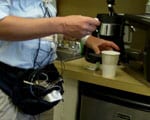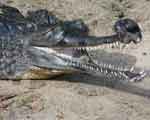The popular blog The Science of Sport has posted a year-end piece on the long-running global controversy surrounding double-amputee runner Oscar Pistorius, the South African vying to compete in the Olympics.
The blog article cites extensively the work of SMU’s Peter Weyand, an expert in human locomotion. Controversy has swirled around Pistorius as the debate continues over the scientific advantage he enjoys as a result of the high-tech, carbon fiber artificial legs he relies on. Weyand helped lead a team of scientists who are experts in biomechanics and physiology in conducting experiments on Pistorius and the mechanics of his racing ability.
Weyand is widely quoted in the press for his expertise on human speed. He is an SMU associate professor of applied physiology and biomechanics in the Annette Caldwell Simmons School of Education & Human Development.
EXCERPT:
By Ross Tucker
The Science of Sport
[ … ] But 18 months later, an extra-ordinary announcement followed. It was made by Peter Weyand and Matthew Bundle, TWO of the group of six scientists in the Pistorius research team. They came out in November 2009 with the statement that “Pistorius enjoys a large advantage”, and that “we knew it all along”.This remarkable statement was followed by a point-counterpoint debate in the Journal of Applied Physiology, which revealed a split among those six scientists. It transpired that on the very first day of testing, Weyand (the world’s leading authority on sprint mechanics) and Bundle noted that Pistorius’ mechanics were “off the charts”.
Specifically, his lighter carbon fiber prosthetic blades enabled him to accelerate his limbs so rapidly that he could do what no other runner could in terms of repositioning his limbs.
Weyand had previously established that a limit to sprinting, regardless of speed, was the ability to reposition the limbs, and Pistorius “broke” the limit considerably. That led Weyand to recognize the performance advantage. Weyand and Bundle describe this in their own words:
“Reduced limb repositioning times allow Mr. Pistorius to spend less time in the air between steps. Shorter aerial periods, in turn, substantially reduce how hard Mr. Pistorius must hit the ground during each stance period to lift and move his body forward into the next step.
In this sense, the level of sprinting athleticism required for Mr. Pistorius to achieve world class speeds is dramatically reduced compared to his intact limb competitors. Mr. Pistorius attains world-class sprinting speeds with the ground forces and foot-ground contact times of a slow and relatively uncompetitive runner. Mr. Pistorius’ intact-limb competitors, with natural limb weights and swing times, lack this option, and therefore must achieve their speeds via exclusively biological means. Mr. Pistorius, in contrast, achieves these speeds through the use of technology.”
You can read more about this discovery and the basis for the 12-second advantage they calculated (an overestimate in my opinion) in the detailed article on this site written in August.
Weyand and Bundle speak
The above statements come from a piece that was written by Weyand and Bundle in response to articles I wrote on this site in August. They contacted me to request a one-time post on The Science of Sport, and I was very happy to oblige. However, for various reasons, the posts didn’t happen here, but they were published on the SMU website. I would highly encourage you to read them – they are lucid, to the point, and they clear up many of the misconceptions that you’d have read in the popular media as a result of lies told by Pistorius, Hugh Herr and co.
SMU is a nationally ranked private university in Dallas founded 100 years ago. Today, SMU enrolls nearly 11,000 students who benefit from the academic opportunities and international reach of seven degree-granting schools. For more information see www.smu.edu.
SMU has an uplink facility located on campus for live TV, radio, or online interviews. To speak with an SMU expert or book an SMU guest in the studio, call SMU News & Communications at 214-768-7650.
 The popular blog The Science of Sport has posted a year-end piece on the long-running global controversy surrounding double-amputee runner Oscar Pistorius, the South African vying to compete in the Olympics.
The popular blog The Science of Sport has posted a year-end piece on the long-running global controversy surrounding double-amputee runner Oscar Pistorius, the South African vying to compete in the Olympics.
 Public health insurance provides insured infants better, less costly care than private plans
Public health insurance provides insured infants better, less costly care than private plans A mathematical model determines which nations are more stable and which are more likely to break up
A mathematical model determines which nations are more stable and which are more likely to break up Indian, Vietnamese immigrants become American over time through civic activities, say anthropologists
Indian, Vietnamese immigrants become American over time through civic activities, say anthropologists


